#Ace in the Hole (1951)
Explore tagged Tumblr posts
Text

#movies#polls#ace in the hole#ace in the hole 1951#ace in the hole movie#50s movies#old hollywood#billy wilder#kirk douglas#jan sterling#robert arthur#porter hall#frank cady#have you seen this movie poll
32 notes
·
View notes
Photo








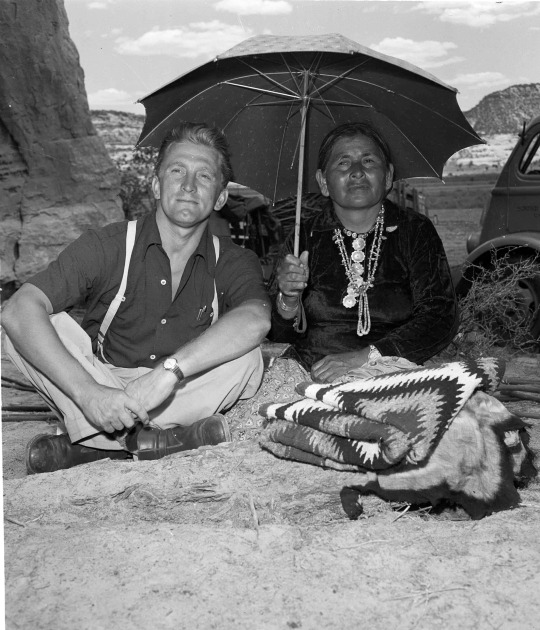

Ace in the Hole (1951) Billy Wilder
May 28th 2023
#ace in the hole#1951#billy wilder#kirk douglas#jan sterling#robert arthur#richard benedict#porter hall#ray teal#john berkes#frank jaquet#frank cady#geraldine hall#the big carnival#the human interest story
22 notes
·
View notes
Text

book cover - Ace In The Hole - 1951
Sam Cherry
3 notes
·
View notes
Photo
Movies I’ve Watched - 2024
268/?: Ace in the Hole (1951) - watched 9/18/24
A movie beautiful to look at but cynical to its core. Not that the cynicism is unwarranted. It is an indictment not just of sensationalist media but the American people. It is no accident that Leo is trapped on sacred indigenous land — although more subtle, the movie is also critical of America’s treatment of indigenous tribes. This movie is only more relevant today with the rise of social media “journalists” panting after clicks, not to mention ideologically-driven pundits such as Alex Jones.

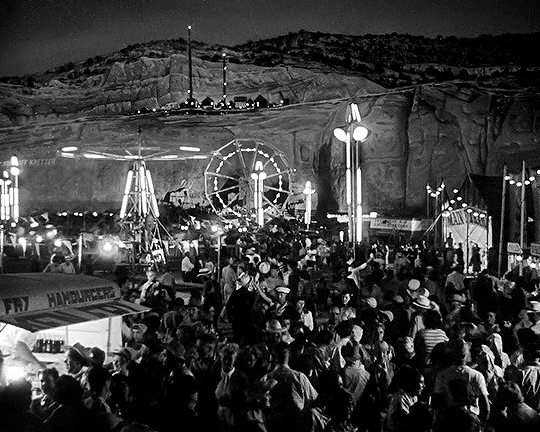


ACE IN THE HOLE (1951) dir. Billy Wilder
615 notes
·
View notes
Text
Ace in the Hole (A.k.a. The Big Carnival) (1951)
A reporter fired from the big time discovers a man stuck in a mine and leads the local sheriff into putting off rescue to build a big story.
Ever present in the subtext of the film, as well as several very overt lines, is a criticism of authority figures including the press as their power to influence is clearly shown as a corruptible and self-serving institution. This criticism also extends to the system and country as a whole by seating the narrative in a Native American sacred place.
Much of the movie gets heavy, not for intense drama or complicated storytelling, but because it’s consistently nihilistic and the parade of characters who are shown as bad or at least weak to their own selfishness leaves the audience with little to positively align with. Even the trapped character is a prospector, creating a constant reminder that his own greed lead him there.
In some ways it works to have the story so entirely embrace bitterness as it reflects the desolation and lack of hope one can feel in a society with few redeemable people, however this doesn’t present a hope that any of it is worth saving, so in a way the plot itself is routing for death. There’s some complexity in the rescue operation and the character motivations so it doesn’t drag too much on the journey.
The conclusion is easy to guess at from a very early stage. There are only two real outcomes, the trapped man is rescued or he dies. Considering the presentation of the characters, it becomes ever more clear which direction the narrative will go. It’s also very light on consequence by the end, the only punishment is by the characters’ own conscience and that in itself, after such a pessimistic psychological exploration reduces the realism.
3/10 -This one’s bad but it’s got some good in it, just there-
-An additional working title was “The Human Interest Story.”
-The film was criticised as “unrelentingly cynical” and lost the studio a fortune.
1 note
·
View note
Text


ACE IN THE HOLE (1951) dir. Billy Wilder
#filmedit#classicfilmsource#filmgifs#fyeahmovies#cinematicsource#mygifs#ace in the hole#jan sterling#**
1K notes
·
View notes
Text

Kirk Douglas gives director Billy Wilder a trim on set of ACE IN THE HOLE (1951).
44 notes
·
View notes
Text
Top 25 films (of the second 250 I watched for this project)
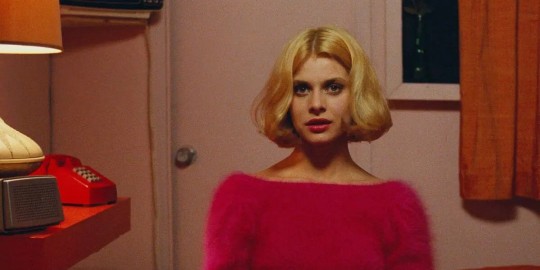
Around two years ago I posted a top 25 list of the first 250 films I watched for this project. Since I have now watched another 250 films and discovered many new favorites, the time has come for a second top 25!
Without further ado, I present them in chronological order (because if I actually had to rank them this list would never get out of the editing stage):
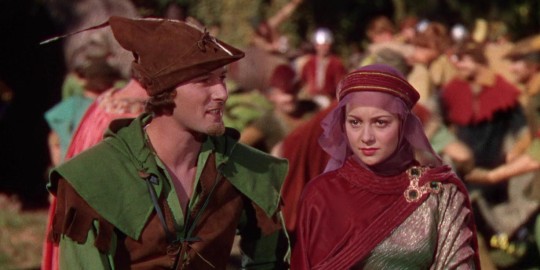
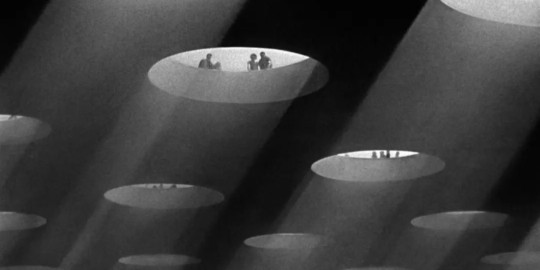
The Adventures of Robin Hood (1938, dir. Michael Curtiz, William Keighley)
This movie is a storybook adventure come to life, charming, entertaining and beautiful to look at (I miss you, technicolor!). Errol Flynn has an unmatched energy as the titular character and Olivia de Havilland is the picture perfect leading lady, with the exact right mixture of grace and fire. This is may not be a particularly complex or groundbreaking film but it does what it does perfectly and taps into that childlike sense of wonder that few films manage so well.
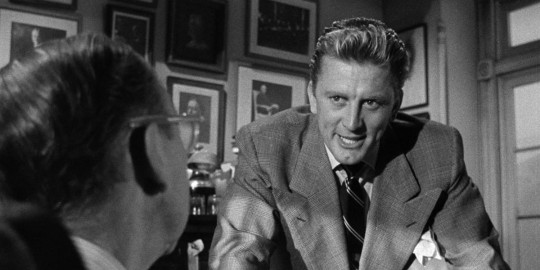
A Matter of Life and Death (1946, dir. Emeric Pressburger, Michael Powell)
One of my most delightful discoveries since starting this project have been the films of Powell and Pressburger - I'm not sure what other directors could boast releasing three of the greatest films of all time in three consecutive years (those being A Matter of Life and Death, Black Narcissus and The Red Shoes). This film mixes a deeply moving love story with a metaphysical court room drama to great success and this strange mixture is mirrored in the film's form, with some experimental but mostly conventional cinematography.
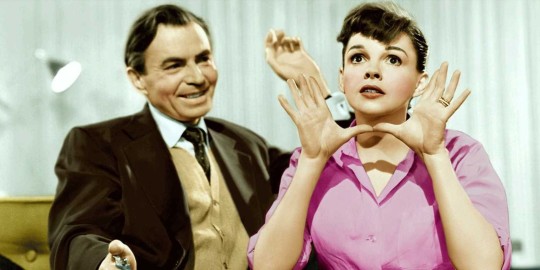
Ace in the Hole (1951, dir. Billy Wilder)
As grim and cynical as it is sharp, this movie plays out like a feverish nightmare. I was honestly shocked at how dark this movie got, considering the time and place in which it was made, but that is absolutely what the story needed and I'm glad Wilder got to tell it this way.
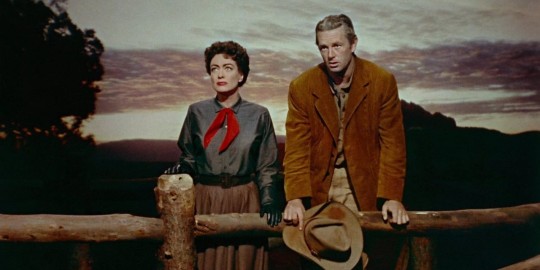
A Star Is Born (1954, dir. George Cukor)
Has there ever been another star to reach the heights of emotional intensity that Judy Garland did in her time? I was lucky enough to see this movie on the big screen and I can't imagine watching it at home, because Garland is so larger than life, I can't see how a smaller screen could contain her. That's not to take anything away from James Mason, who gives a tragic and intense performance for the ages.
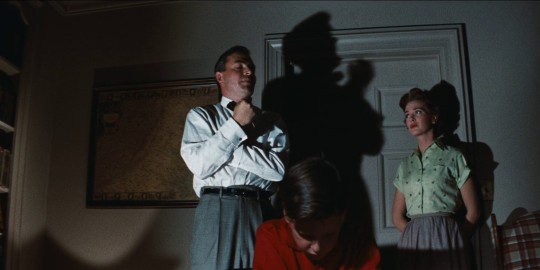
Johnny Guitar (1954, dir. Nicholas Ray)
Joan Crawford in your butch black shirt save me! Save me, Joan Crawford in your butch black shirt!

Bigger Than Life (1956, dir. Nicholas Ray)
Surprise, it's another Nicholas Ray melodrama! Ray had this habit of creating highly emotional stories that hid some sharp social commentary, but the commentary is barely hidden this time and it is shockingly subversive. Mason gives another intense performance but here it tilts fully into unhinged territory and he is terrifying to watch. The ending feels a little slapped on but it also feels like the only way Ray could get away with everything that came before.
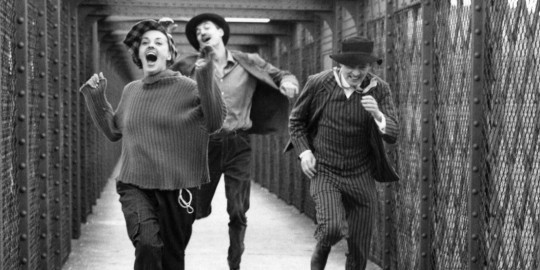
Mon Oncle (1958, dir. Jacques Tati)
This movie feels like a precursor to Playtime, one of my all-time favorite films (incredibly novel opinion, I know). The sets are meticulously designed and a delight to behold, and Tati's performance as Monsieur Hulot (the titular uncle) is charming as always. I especially adore the contrast between the traditional and modern Paris, as well as the unconventional sound mixing that refuses to privilege dialogue, leaning into cinema's strengths as a visual medium.
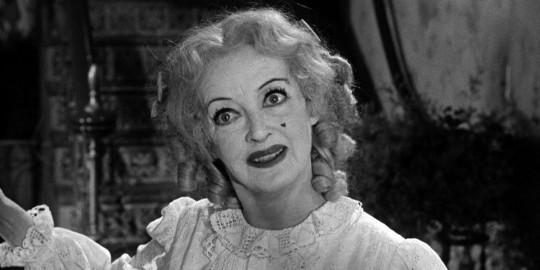
Jules and Jim (1962, dir. François Truffaut)
This is by far my most recent watch on this list and it's still kind of percolating in my head but I loved it when I watched it and my fondness for it has been growing daily. It has that charming, youthful irreverence that the French New Wave is so known for, as well as one of the most complex depictions of a female character I've seen in french cinema.

What Ever Happened to Baby Jane? (1962, dir. Robert Aldrich)
Bette Davis is one of my all time favorite actresses and this is one of my all time favorite performances. She puts everything into this role and the rest of the film compliments her perfectly; it's funny and dark, tragic and absolutely unhinged. And Joan Crawford is good too, I guess.
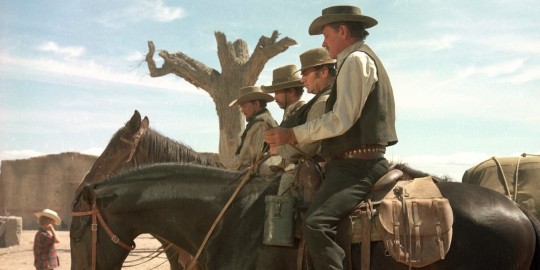
Tokyo Olympiad (1965, dir. Kon Ichikawa)
This blew my mind when I first watched it, seeing what incredible feats documentary filmmakers were capable of so early on in the genre's history. It is also the perfect counterpoint to Riefenstahl's earlier documentaries about the Olympic games; where she emphasized nationalism and feats of strength, Tokyo Olympiad focuses on the humanity of it and the power this event has to bring us together. Probably my favorite section of the film focuses on an athlete who was the sole representative of his newly independent country and who did not qualify for the finals in his field (unfortunately I don't remember the country or the sport). But just the fact that he made it to the Olympics, that he got to represent his country on the world stage, is an incredible feat in and of itself, and the film recognizes this.

The Wild Bunch (1969, dir. Sam Peckinpah)
This movie is everything a western should be - exciting, violent, and deeply critical of the ugly history it is depicting. The characters are not good people but they are compelling and incredibly fun to watch.
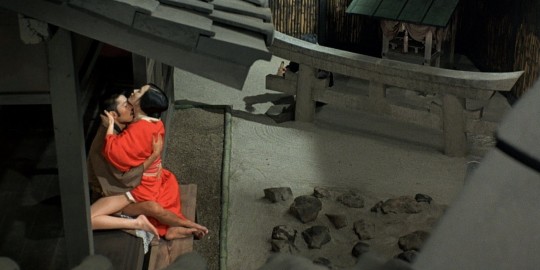
Woodstock (1970, dir. Michael Wadleigh)
Another mindblowing documentary that pushes the ability of the medium to its limits. It captures a unique moment in time, a spirit of rebellion and hope for the future that unfortunately feels worlds away from our current cultural landscape. It is also an incredible display of the emotional power of music. I cried during Janis Joplin's performance and it felt impossible to match, but then it is immediately followed by Jimi Hendrix and I could feel my soul descend to a higher plane of existence. It is my life's goal to see this film in the theater.
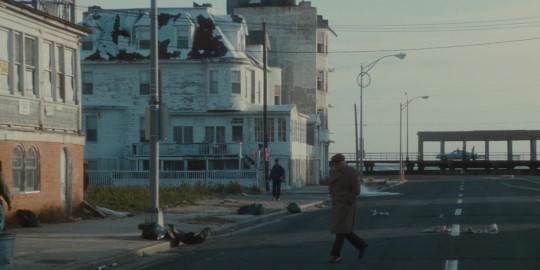
In the Realm of the Senses (1976, dir. Nagisa Ōshima)
Everything is sex, except sex, which is love and beauty and death all intertwined and impossible to separate.

Atlantic City (1980, dir. Louis Malle)
Rarely has a setting felt so integral to a film. Everything from the story, to themes, to the characters revolves around and is subservient to the setting of a declining Atlantic City whose glory days are far behind it. It is also a microcosm of American society at large, at least as people were experiencing it in 1980 (although it's pretty relevant today, I would say).

Gallipoli (1981, dir. Peter Weir)
This is the movie that definitively convinced me that anti-war films are indeed possible to make, just not in Hollywood (Come and See had me thinking this, but Gallipoli proved to me that it wasn't a unique feat of just one film). We barely see the war in this movie but it is all about the incredible tragedy of it.
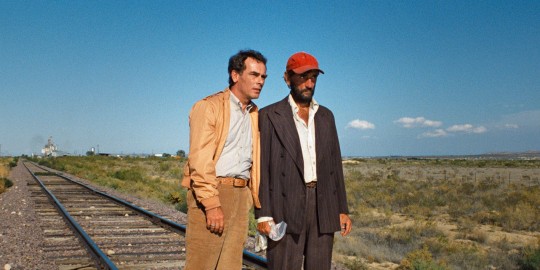
Koyaanisqatsi (1982, dir. Godfrey Reggio)
I was completely expecting this movie to put me to sleep and instead, it was one of the most viscerally intense and haunting viewing experiences of my life. It is hypnotic in the very best way and somehow captures the ennui of modern life without a single word being spoken.
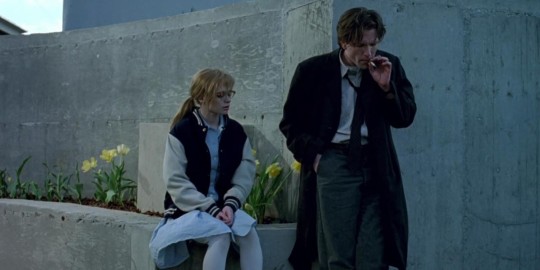
Paris, Texas (1984, dir. Wim Wenders)
This film is an intoxicating mixture of tenderness and brutality, and a deeply moving depiction of our longing to reach out and connect to one another. This is the other film on the list I got to see in the theater and the cinematography was absolutely breathtaking on the big screen.
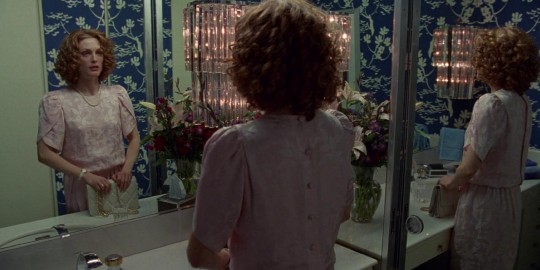
Trust (1990, dir. Hal Hartley)
This is such a delightfully strange film, almost but not quite set in our reality. The strangeness makes the gentleness of the love story all the more touching; this is one of those movies that makes me happy to be alive.
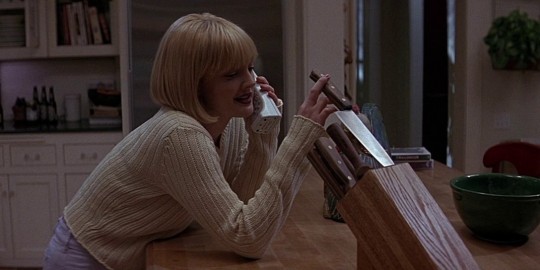
Safe (1995, dir. Todd Haynes)
I have been kind of obsessed with this movie since I saw it, so much so that it will actually be a focal point in my master's thesis. Everything in the film, from the cinematography to the soundtrack to, especially, Julianne Moore's performance, builds to this overwhelming sense of anxiety and dread, and Haynes' refusal to give an easy answer (or any answers at all) makes it all the more unsettling.
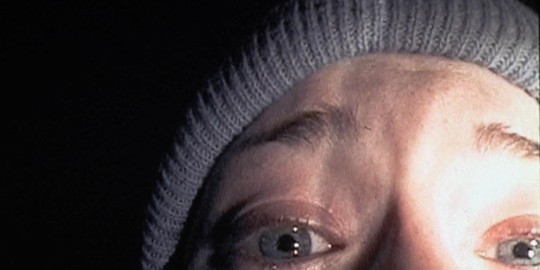
Scream (1996, dir. Wes Craven)
I do like scary movies, yes. I especially like movies that are scary, funny, and feature a bloody final girl and (more than) a touch of homoeroticism.
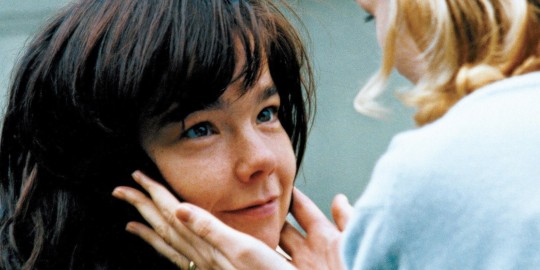
The Blair Witch Project (1999, dir. Daniel Myrick, Eduardo Sánchez)
Look at that, another scary movie! I am probably more susceptible to this movie's attempts at scares than most viewers, because I've only very recently started to build any kind of tolerance for horror, but it got me so good. The simplicity just makes it better; it may only do one thing but it does it very, very well.

Dancer in the Dark (2000, dir. Lars von Trier)
I'm always kind of hoping when I watch a new Lars von Trier movie that maybe I won't like this one, because I don't know what it says about me that I enjoy his films so much but I know that it can't be good. But this movie belongs just as much to Björk, who gives an incredible acting performance and an all-time great vocal performance. I was left a sobbing wreck; to this day, just humming 'The next to last song' to myself brings a tear to my eye.
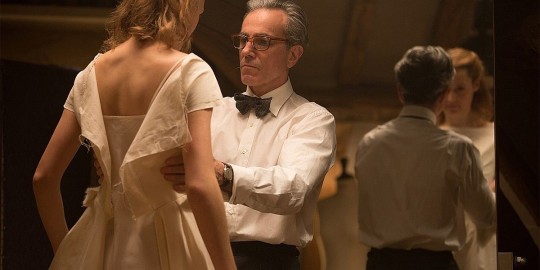
Volver (2006, dir. Pedro Almodóvar)
Penélope Cruz is a revolution in this movie, my god. She brings the emotional sincerity that the film needs to keep its elaborate plot grounded. As always, I appreciate Almodóvar's clear love for strong and complicated women, as well as the often messy relationships between them.

Phantom Thread (2017, dir. Paul Thomas Anderson)
I love a good twisted love story and it is beautifully told here. Form also compliments function to a tee; a story about an obsessive compulsion to create perfect art is mirrored in the absolutely meticulous cinematography and costuming. Daniel Day-Lewis gives the performance of a lifetime here and while I do miss seeing him in the theater, what a film to end on!
Roma (2018, dir. Alfonso Cuarón)
This is one of those movies where nothing happens, in that there isn't a traditional plot (events still take place, obviously), because it's about life, man. It's a type of film that needs a deft hand and a filmmaker with something to say, and Cuarón has both in spades. Funnily enough, this movie reminds me a lot of Paris, Texas; it has that same mix of tenderness and harshness that compliment each other.
#1001 movies#top list#top 25#the adventures of robin hood#a matter of life and death#ace in the hole#a star is born#johnny guitar#bigger than life#mon oncle#jules and jim#whatever happened to baby jane#tokyo olympiad#the wild bunch#woodstock#in the realm of the senses#atlantic city#gallipoli#koyaanisqatsi#paris texas#trust#safe#scream#the blair witch project#dancer in the dark#volver#phantom thread#roma
24 notes
·
View notes
Text
I was tagged by @memory-for-trifles for my top first-time watches in 2024 of movies not from 2024, and also by @door for my nine favorite movies of the year, which I am combining to nine non-recent releases. Thank you buddies!!
Also NOT thank you, as it seems I watched 190 new to me, pre-2024 movies last calendar year, and rated fully 45 of them five stars.
....so here is a representative nine categories (blood! tears!!), and then the whole list of older movies that fucking rule.
: :
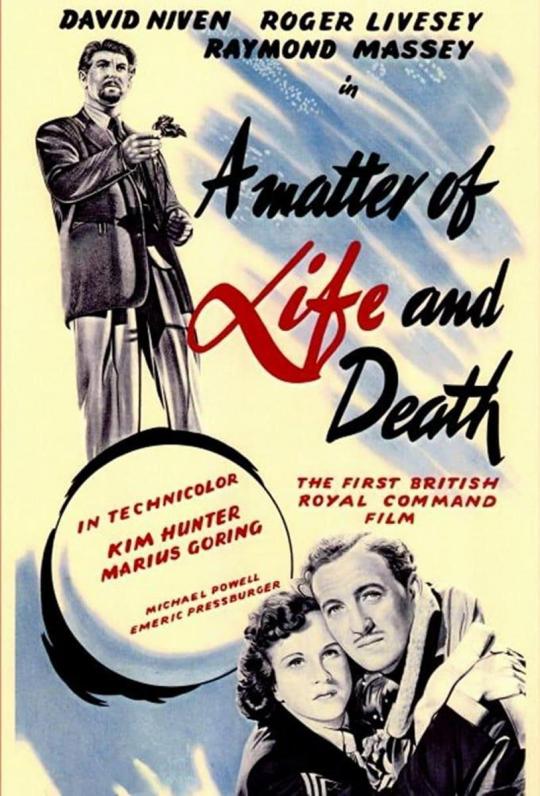


Powell & Pressburger: A Matter of Life and Death (1946) Pre-Code: Trouble In Paradise (1932) Screwball: It Happened One Night (1934)



Western: Dead Man (1995) Marty: Mean Streets (1973) Agnès: Le Bonheur (1965)



Historical: The Leopard (1963) Satyajit Ray: Pather Panchali (1955) Noir: Out of the Past (1947)
: :
Top 45 Non-2024 Movies I Watched in 2024 [alphabetical]
A Matter of Life and Death (1946) Powell & Pressburger Ace In the Hole (1951), Billy Wilder All About Eve (1950), Joseph L. Mankiewicz Bad Day at Black Rock (1955) John Sturges Daisies (1966) Věra Chytilová Dead Man (1995) Jim Jarmusch Cat People (1942) Jacques Tourneur It Happened One Night (1934) Frank Capra Johnny Guitar (1954) Nicholas Ray La Ronde (1950) Max Ophüls Laura (1944) Otto Preminger Le Bonheur (1965) Agnès Varda Little Women (1994) Gillian Armstrong Mean Streets (1973) Martin Scorsese Metropolitan (1990) Whit Stillman Miracle on 34th Street (1947) George Seaton Nights of Cabiria (1957) Federico Fellini On the Beach (1959) Stanley Kramer Only Angels Have Wings (1939) Howard Hawks Out of the Past (1947) Jacques Tourneur Pather Panchali (1955) Satyajit Ray Queen Christina (1933) Rouben Mamoulian Sunset Boulevard (1950) Billy Wilder The Age of Innocence (1993) Martin Scorsese The Awful Truth (1937) Leo McCarey The Best Years of Our Lives (1946) William Wyler The Big City (1963) Satyajit Ray The Fabulous Baron Munchausen (1962) Karel Zeman The Heiress (1949) William Wyler The Lady Vanishes (1938) Alfred Hitchcock The Leopard (1963) Luchino Visconti The Lodger: A Story of the London Fog (1927) Alfred Hitchcock The Manchurian Candidate (1962) John Frankenheimer The Philadelphia Story (1940) George Cukor The Red Shoes (1948) Powell & Pressburger The Servant (1963) Joseph Losey The Treasure of the Sierra Madre (1948) John Huston The Wind (1928) Victor Sjöström They Shoot Horses, Don’t They (1969) Sydney Pollack To Be or Not to Be (1942) Ernst Lubitsch Trouble in Paradise (1932) Ernst Lubitsch Ugetsu (1953) Kenji Mizoguchi Wait Until Dark (1967) Terence Young Wings of Desire (1987) Wim Wenders Zodiac (2007) David Fincher
Honorable Mentions
I had technically watched Casablanca (1942) and Brief Encounter (1945) many, many many many years earlier, but I rewatched both of them this past year as an adult, and guess what: five stars
Tagging @passingknightly, @knighthooded, @camestela, @bakingblues, @forshesajollygoodfellow, @alpineshepherdlass, @valentinsylve, and anyone else who enjoys a MOVIE
23 notes
·
View notes
Text

BBC2 Moviedrome (1989)
Ace In The Hole (1951)
9 notes
·
View notes
Text

Ace in The Hole (1951), dir. Billy Wilder
#ace in the hole#billy wilder#kirk douglas#robert arthur#film noir#classic cinema#old hollywood#classic film#classic hollywood
23 notes
·
View notes
Text



I was tagged by @slayerbuffy to share my favorite first watches of May 💖
Ace in the Hole (1951) Dir. Billy Wilder Perfect Days (2023) Dir. Wim Wenders Challengers (2024) Dir. Luca Guadagnino
tagging @anthonysperkins @hayaomiyazaki @henricavyll @normasshearer 💜
8 notes
·
View notes
Text
was a tie on twitter so someone decide for me here should i watch ace in the hole (1951) or some like it hot (1959) im not making a poll because i dont respect them
#other options were sweet smell of success and artists and models. if whoever replies first wants one of those first you get those#doing a cute little decades thing after i realised all my last 5 movies were in descending order of decade. appealing to my sims 4 challeng#sensibilities
9 notes
·
View notes
Text
ace in the hole taken from the 1951 film.
it’s like somebody was driving crooked nails through my head.
you got to watch yourself.
don’t you know there’s a war on somewhere?
wrap yourself in this blanket.
suppose you stop beating around the bush.
now put it on your right side. underneath your arm.
you’ve got a medal, and i know how you got it.
do what the doctor tells you.
calms my nerves.
the sandwiches are in the blanket.
here’s your nickel back.
nobody dies of pneumonia these days.
i’m a pretty good liar.
give it to me straight.
don’t talk, please. just breathe.
now get the smile off your face.
a couple of hamburgers, please.
i’ve done a lot of lying in my time.
you don’t expect the kid to stand still.
i know newspapers backward, forward and sideways.
look, they’re having a rosary at that little church this evening.
you can’t lie down here five days and five nights in the same position.
bad news sells best. because good news is no news.
now let me help you. i’ll take you to a doctor or a hospital.
you’re repeating yourself.
don’t try it by yourself.
and get some of this hot coffee inside of you.
don’t be so dumb, using up all your strength.
i brought you some chicken tacos.
you’re kidding. you don’t really wish for anything like that.
put that thing back on your mouth, and take a good long drag. you have to breathe that oxygen.
and another thing. don’t ever slap me again.
you wouldn’t be lying to me now, would you?
i brought you enough for a couple of days, some shirts and shorts.
you read it, but it doesn’t stay with you.
i’m thinking. don’t rush me.
that tin badge will do you no good.
this is my story. and i wanna keep it mine.
hey, there’s something screwy about this place.
but when you lie down here all by yourself, you get to thinking.
have you gone nuts?
what a suspicious nature you have.
bless me, father, for i have sinned.
guess i’m getting too old to crawl around in there.
taking your picture.
i didn’t even know you were alive this time last week, and now you’re my friend.
you know, things haven’t been so good between us. maybe this’ll make a difference.
looks like it’s your move, copper.
i’m in the boat. you’re in the water.
everybody’s upset about you.
a hospital back in (place) said i had a touch of TB.
brought you out here, fed you, nursed you.
i thought you went away.
got a couple of other names for it myself.
that’s enough outdoors for me.
i met a lot of hard-boiled eggs in my life.
4 notes
·
View notes
Text










Ace in the Hole, 1951 Dir. Billy Wilder
3 notes
·
View notes
Text

Detective Comics #138 (August 1948): "The Invisible Crimes!"
Batman #52 (April-May 1949): "The Happy Victims!"
Batman #53 (June-July 1949): "A Hairpin, a Hoe, a Hacksaw, a Hole in the Ground!"
Detective Comics #149 (July 1949): "The Sound Effect Crimes!"
Batman #59 (June-July 1950): "The Batman of the Future!"
Batman #49 (October-November 1948): "Batman's Arabian Nights!"
Batman #57 (February-March 1950): "The Funny Man Crimes!"
Detective Comics #168 (February 1951): "The Man Behind The Red Hood"
World's Finest #48 (? 1950): "Song of Crime!"
Batman #55 (October-November 1949): "The Case of the 48 Jokers!"
Batman #67 (October-November 1951): "The Man Who Wrote the Joker's Jokes!"
Batman #63 (February-March 1951): "The Joker's Crime Costumes!"
Detective Comics #180 (February 1952): "The Joker's Millions!"
Batman #66 (August-September 1951): "The Joker's Comedy of Errors!"
World's Finest #59 (? 1952): "The Joker's Aces!"
Batman #73 (October-November 1952): "The Joker's Utility Belt!"
World's Finest #61 (November 1952): "The Crimes of Batman!"
Batman #80 (December 1953-January 1954): "The Joker's Movie Crimes!"
Detective Comics #193 (March 1953): "The Joker's Journal!"
Batman #74 (December 1952-January 1953): "The Crazy Crime Clown!"
Batman #85 (August 1954): "Batman - Clown of Crime!"
Batman #86 (September 1954): "The Joker's Winning Team!"
Batman #87 (October 1954): "The Batman's Greatest Thrills!"
Batman #97 (February 1956): "The Joker Announces Danger!"
World's Finest #88 (June 1957): "Superman and Batman's Greatest Foes!"
Batman #110 (September 1957): "Crime-of-the-Month Club!"
Batman #123 (April 1959): "The Joker's Practical Jokes!"
Batman #127 (October 1959): "Batman's Super-Partner!"
Batman #144 (December 1961): "The Man Who Played Batman!"
Batman #145 (February 1962): "The Son of the Joker!"
Batman #140 (June 1961): "The Ghost of the Joker!"
Batman #136 (December 1960): "The Challenge of the Joker!"
Batman #2 (Summer Issue 1940): "The Joker Meets The Cat-Woman"
Batman #1 (Spring Issue 1940): "The Joker", "The Joker Returns"
Detective Comics #45 (November 1940): "The Case of the Laughing Death"
Batman #4 (Winter Issue 1941): "The Case of the Joker's Crime Circus"
Batman #5 (Spring Issue 1941): "The Riddle of the Missing Card"
Detective Comics #60 (February 1942): "Case of the Costumed Clad Killers"
Batman #7 (October-November 1941): "The Winning Team!"
Batman #8 (December 1941-January 1942): "The Cross Country Crimes"
Batman #9 (February-March 1942): "The Case of the Lucky Law-Breakers"
Detective Comics #62 (April 1942): "Laugh, Town, Laugh!"
Batman #12 (August-September 1942): "The Wizard of Words!"
Detective Comics #64 (June 1942): "The Joker Walks the Last Mile"
Batman #11 (June-July 1942): "The Joker's Advertising Campaign"
Batman #13 (October-November 1942): "Comedy of Tears!"
Detective Comics #71 (January 1943): "A Crime a Day!"
Detective Comics #69 (November 1942): "The Harlequin's Hoax!"
Batman #16 (April-May 1943): "The Joker
Reforms!" Detective Comics #76 (June 1943): "Slay 'em with Flowers!"
Batman #19 (October-November 1943): "The Case of the Timid Lion!"
Batman #20 (December 1943-January 1944): "The Centuries of Crime!"
Detective Comics #85 (March 1944): "The Joker's Double"
Batman #23 (June-July 1944): "The Upside Down Crimes!"
Batman #25 (October-November 1944): "Knights of Knavery" Batman #28 (April-May 1945): "Shadow City!"
Detective Comics #91 (October 1944): "The Case of the Practical Joker"
Detective Comics #102 (August 1945): "The House That Was Held For Ransom"
World's Finest #19 (Fall Issue 1945): "The League for Larceny!"
Batman #32 (July-August 1945): "Rackety-Rax Racket!"
Detective Comics #114 (August 1946): "Acrostic of Crime!"
Detective Comics #109 (March 1945): "The House that Jokes Built"
Batman #37 (October-November 1946): "The Joker Follows Suit!"
Batman #46 (April-May 1948): "Guileful Greetings or The Joker Sends Regards!"
Detective Comics #124 (June 1947): "The Crime Parade"
Detective Comics #118 (December 1946): "The Royal Flush Crimes!"
Batman #40 (April-May 1947): "The 13 Club!"
Detective Comics #137 (July 1948): "The Rebus
Detective Comics #128 (October 1947): "Crimes in Reverse!"
Batman #44 (December 1947-January 1948): "Gamble with Doom!"
Batman #145 (February 1962): "The Son of the Joker!"
Batman Annual #3 (Summer 1962): "The Joker's Aces" (Reprint from World's Finest #59)
Batman #140 (June 1961): "The Ghost of the Joker!"
World's Finest #129 (November 1962): "Joker-Luthor, Incorporated!"
Batman #148 (June 1962): "The Joker's Greatest Triumph!"
Batman #144 (December 1961): "The Man Who Played Batman!"
Batman #152 (December 1962): "The False-Face Society!"
Batman #159 (November 1963): "The Great Clayface-Joker Feud!"
Detective Comics #332 (October 1964): "The Joker's Last Laugh!"
Detective Comics #341 (July 1965): "The Joker's Comedy Capers!"
Justice League of America #34 (March 1965): "Deadly Dreams of Dr. Destiny"
Batman #163 (May 1964): "The Joker Jury!"
Batman #182 (August 1966): "The Joker Batman" (Reprint from Batman #85)
World's Finest #156 (March 1966): "The F.B.I... The Federation of Bizarro Idiots!"
World's Finest #159 (August 1966): "The Cape and Cowl Crooks"
The Brave and the Bold (October-November 1966): "Alias the Bat-Hulk"
Batman #185 (November 1966): "80 Pg. Giant - G27"
Batman #186 (November 1966): "The Joker's Original Robberies!"
Batman #176 (December 1965): "The Joker's Utility Belt" (Reprint from Batman #73)
The Adventures of Jerry Lewis #97 (November-December 1966): "Batman Meets Jerry"
Batman #187 (December 1966): "Gotham's Cleverest Criminal" (Newspaper Strip Rperint)
Batman #198 (February 1968): "The Crimes of Batman!" (Reprint from World's Finest #61)
World's Finest #166 (May 1967): "The Danger of the Deadly Duo!"
Detective Comics #365 (July 1967): "The House The Joker Built"
World's Finest #177 (August 1968): "Duel of the Crime Kings!"
Detective Comics #388 (June 1969): Batman and Batgirl: "The First Men Killed on the Moon!"
Batman #213 (July-August 1969): "The Man Behind the Red Hood!" (Reprint from Detective Comics #186)
Justice League of America #77 (December 1969): "Snapper Carr -- Super-Traitor!"
Wanted: The World'd Most Dangerous Criminals (September-October 1972): "Knights of Knavery" (Reprint from Batman #25)
DC Special #8: Wanted (September 1970): "Joker-Luthor, Incorporated" (Reprint from World'd Finest #129)
Batman #251 (September 1973): "The Joker's Five-Way Revenge"
The Brave And The Bold #111 (Feb/March 1974): "Death Has The Last Laugh"
Limited Collector's Edition #C-25 (Batman) (1974 - tabloid sized): "The Case o the Joker's Crime Circus" (Reprint from Batman #4)
The Brave and the Bold #118 (April 1975): "May the Best man Die"
Batman #257 (July-August 1974): "Rackety-Rax Racket!" (Reprint from Batman #32)
World's Finest #227 (January-February 1975): "The Cape and Cowl Crooks!" (Reprint from World's Finest #159)
Batman #260 (January-February 1975): "This One'll Kill You, Batman!"
#batman and joker#batman x joker#comics#batjokes#comic books#batman#the joker#batmm#dc universe#dcedit#dc cartoons#dc comics#more comics#list
25 notes
·
View notes